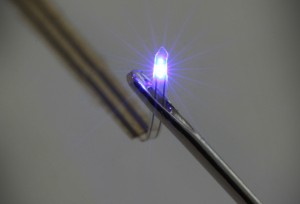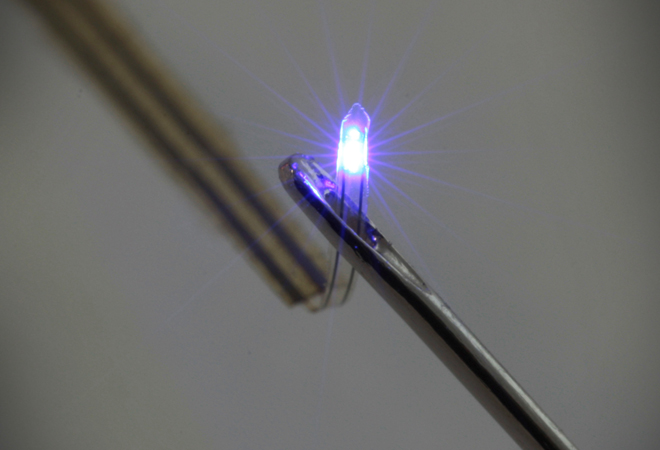
Tiny, glowing probes packed with LEDs and sensors are scientists’ newest tool for measuring and manipulating the brain and other living tissues. They’re flexible, they can operate wirelessly, and yes, they’re small enough to fit through the eye of a needle.
This kind of device could potentially improve researchers’ ability to influence neural activity in live animals and measure a variety of physiological and biochemical processes, says applied physicist and neuroscientist Mark Schnitzer of Stanford University, who was not involved in the work. Such bio-compatible electronics also offer new possibilities for manipulating living tissue based on rapid feedback from sensors embedded in the tissue.
One obvious application in brain research is for optogenetics experiments, which involve genetically modifying neurons to make them fire in response to light. In recent years neuroscientists have used these methods to examine the neural circuits involved in everything from drug addiction, to depression, to Parkinson’s disease. But getting light to areas deep inside the brain is tricky.




